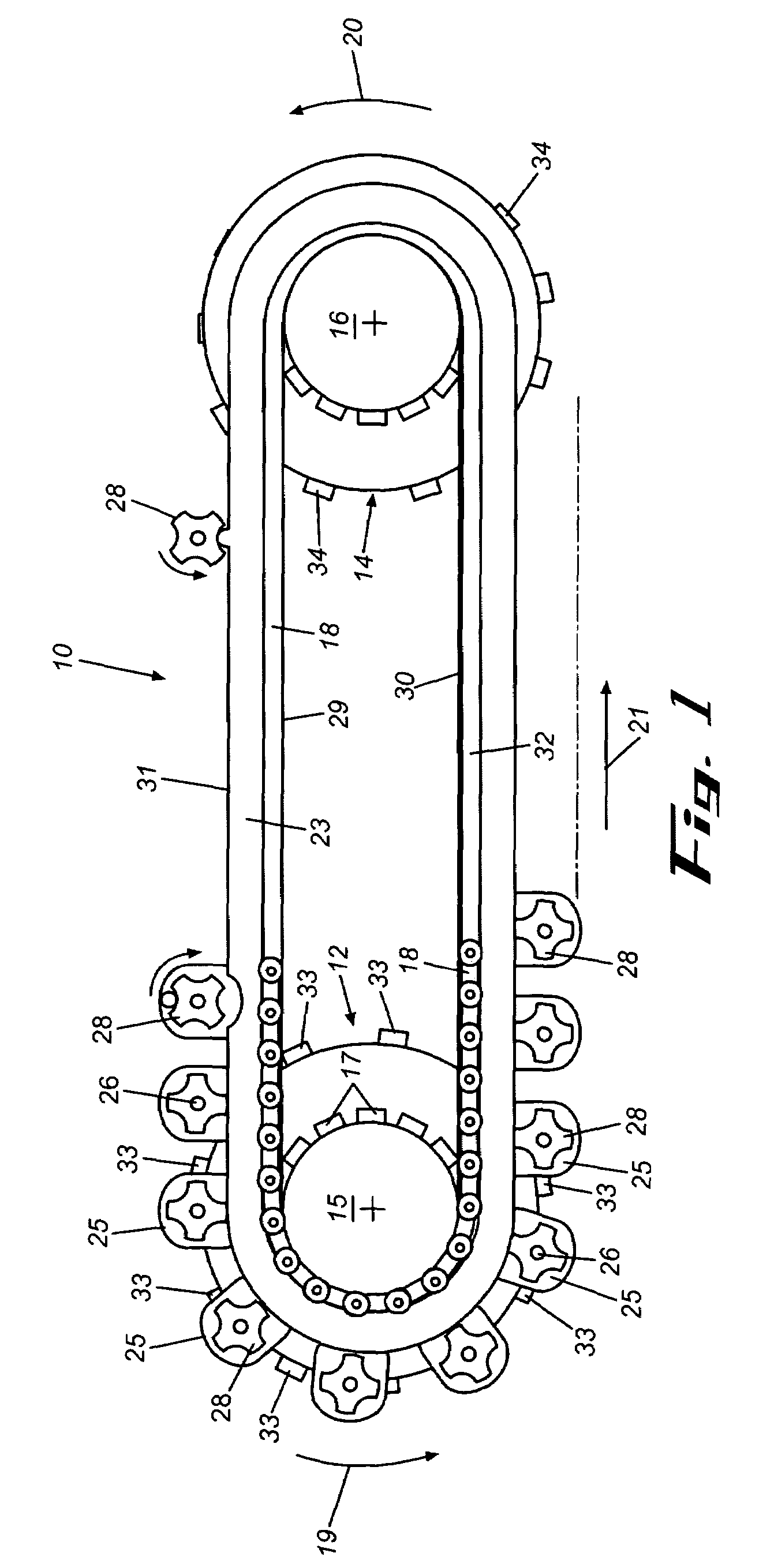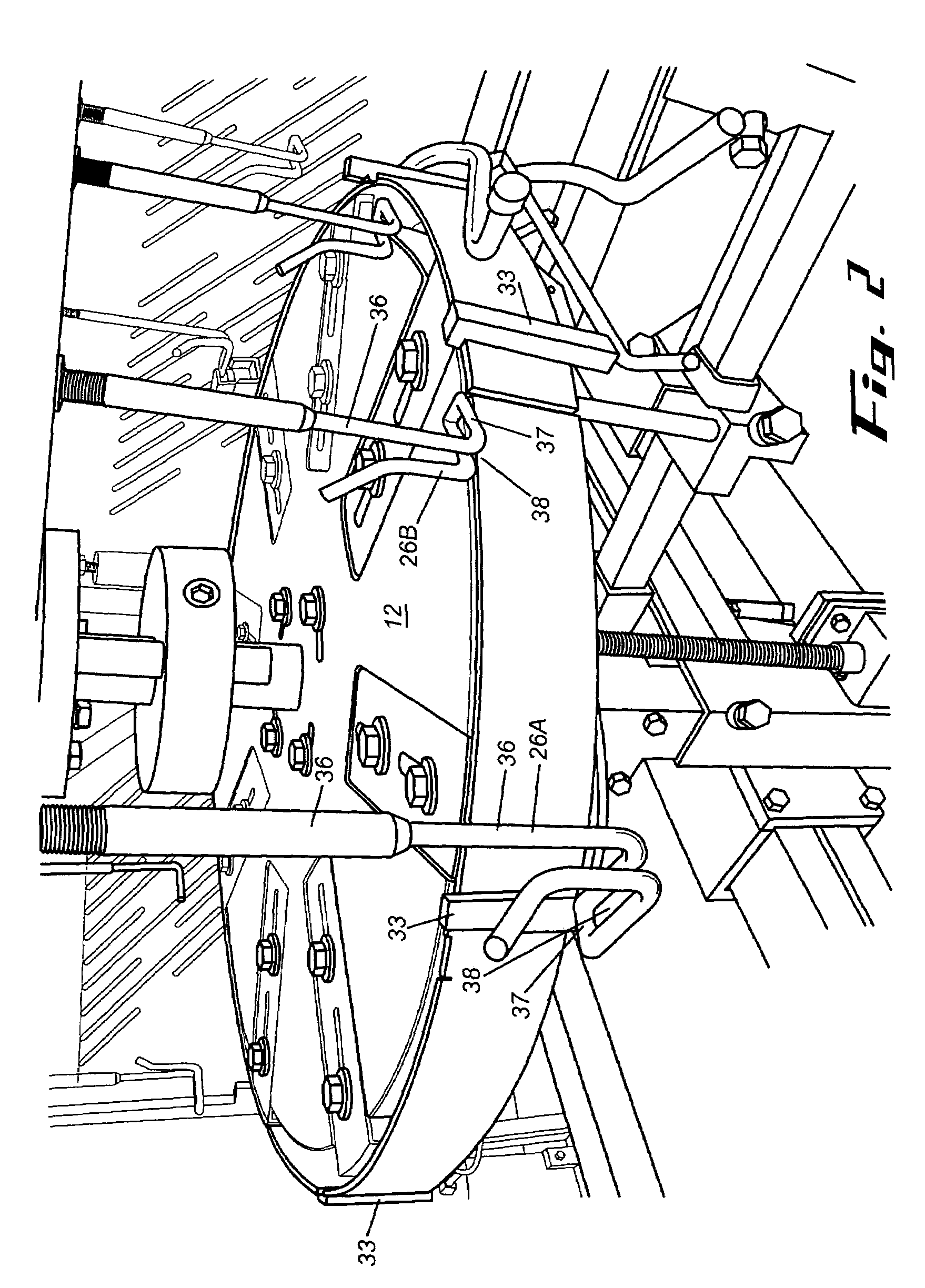Poultry wing separator and partial deboner
a technology of poultry wings and separators, applied in the field of poultry wing separators and deboning systems, can solve the problems of difficult eat of wings, limited use of poultry wings, and less economical use of poultry wings, and achieve the effect of reducing the residue of greas
- Summary
- Abstract
- Description
- Claims
- Application Information
AI Technical Summary
Benefits of technology
Problems solved by technology
Method used
Image
Examples
Embodiment Construction
[0029]Referring now in more detail to the drawings, in which like numerals indicate like parts throughout the several views, FIG. 1 illustrates the top of the poultry wing separator and partial deboner 10, showing the drive system for moving the shackles in series along the processing path.
[0030]Primary segment rotary guide 12 is operatively connected to the mid-wing segment rotary guide 14 by drive gear 15, driven gear 16, the teeth 17 of the gears, and continuous drive chain 18. The teeth 17 of the drive gear and driven gear mesh with the chain, and a motor or other source of power (not shown) is connected to drive gear to impart rotary movement to the drive gear, drive chain and driven gear as indicated by direction arrows 19, 20 and 21 about upright axes 22A and 22B.
[0031]The drive chain 18 is driven adjacent a cam track 23 that extends about the drive and driven gears 15 and 16, and shackle supports 25 are carried at spaced intervals by the drive chain and project on the opposi...
PUM
 Login to View More
Login to View More Abstract
Description
Claims
Application Information
 Login to View More
Login to View More - R&D
- Intellectual Property
- Life Sciences
- Materials
- Tech Scout
- Unparalleled Data Quality
- Higher Quality Content
- 60% Fewer Hallucinations
Browse by: Latest US Patents, China's latest patents, Technical Efficacy Thesaurus, Application Domain, Technology Topic, Popular Technical Reports.
© 2025 PatSnap. All rights reserved.Legal|Privacy policy|Modern Slavery Act Transparency Statement|Sitemap|About US| Contact US: help@patsnap.com



